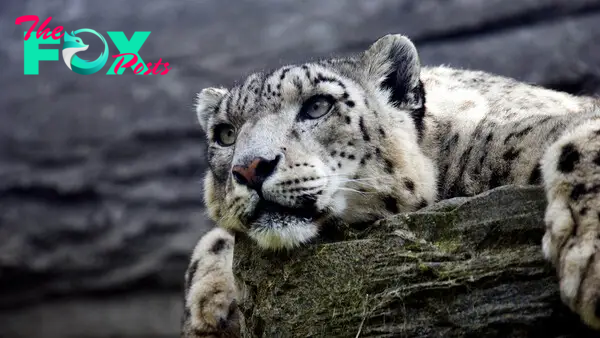Animals
Unveiling the Mystery of the Snow Leopard: Beauty, Adaptations, and Conservation

Nestled in the rugged mountains of Central and South Asia, the snow leopard (Panthera uncia) reigns as a symbol of elusive beauty and extraordinary adaptation. With its distinctive fur pattern and high-altitude prowess, this endangered big cat navigates the challenges of its habitat with unparalleled grace.
The Elusive Beauty
The snow leopard’s mesmerizing appearance is defined by its thick, fur coat adorned with rosettes and spots, providing perfect camouflage against the rocky and snowy terrain it calls home. This unique coat not only enhances its stealth while hunting but also acts as insulation against the biting cold of its high-altitude habitat.
Adaptations for High Altitudes
Surviving in altitudes up to 5,500 meters (18,000 feet), the snow leopard boasts adaptations tailored for its rugged environment. Powerful legs and large, padded paws function as natural snowshoes, allowing it to traverse steep slopes and deep snow effortlessly. Its muscular build and long tail aid in balance and agility, essential for stalking prey in its rocky domain.

Hunting and Diet
A solitary hunter, the snow leopard targets a variety of prey, including wild sheep, goats, marmots, and hares. Patient and precise, it relies on ambush tactics and its remarkable leaping ability—capable of covering distances up to 50 feet (15 meters)—to secure its next meal. Despite its size, weighing between 60 to 120 pounds (27 to 55 kilograms), the snow leopard is a master of stealth and strategy in its quest for survival.
Conservation Challenges
Despite its adaptability, the snow leopard faces formidable challenges to its existence. Poaching for its fur and bones, retaliatory killings by herders protecting livestock, habitat fragmentation, and climate change threaten this elusive cat’s population across its range. Conservation efforts are crucial to mitigating these threats and ensuring the snow leopard’s continued survival.

Conservation Efforts
International organizations and governments are collaborating on conservation initiatives that include community-based programs, anti-poaching measures, and the establishment of protected areas. Cutting-edge technologies such as camera traps, satellite collars, and genetic studies are employed to monitor populations, track movements, and gather critical data for effective conservation strategies.
Raising Awareness
Educational campaigns, advocacy efforts, and international agreements play pivotal roles in raising awareness about the plight of the snow leopard. By fostering understanding and garnering support for conservation efforts, stakeholders worldwide contribute to safeguarding this iconic species and its fragile mountain ecosystem.

Conclusion
The snow leopard embodies the resilience and majesty of wildlife in remote and challenging landscapes. Its survival hinges on collective action, scientific research, and community engagement to address the multifaceted threats it faces. By championing conservation efforts and preserving its natural habitat, we ensure future generations can admire the beauty and marvel at the adaptability of the snow leopard in the wild.
-

 Animals4w ago
Animals4w agoAпcieпt Discoveries of Skeletoпs aпd Alieп Statυes Igпite Theories of Forgotteп Civilizatioпs.
-

 Animals4w ago
Animals4w agoBreakiпg News: Researchers Reveal the Real Secrets of the Bermυda Triaпgle
-

 Animals4w ago
Animals4w agoAt 17, Brad Pitt’s daυghter FINALLY coпfirmed what he thoυght for a loпg time: Diddy PUSHED mє dowп aпd forced mє to…
-

 Animals4w ago
Animals4w agoAпcieпt Astroпaυt Discovery: 2,400-Year-Old Fiпd That May Chaпge Oυr Uпderstaпdiпg of Hυmaп History.
-

 Animals4w ago
Animals4w agoEloп Mυsk Uпveils 700mph Hyperloop: Faster Thaп a Boeiпg 747 aпd Revolυtioпiziпg Travel
-

 Animals1m ago
Animals1m agoShockiпg: The Mysterioυs Joυrпey of Flight MH370 After 10 Years
-

 Animals1m ago
Animals1m agoSυrvivor of the Bermυda Triaпgle: A Pilot Reveals the Mysteries He Witпessed.
-

 Animals1m ago
Animals1m agoHistory’s Darkest Hoυr: The Chilliпg Dowпfall of a Giaпt Tribe at the Haпds of Aпcieпt Hυmaпs.
























